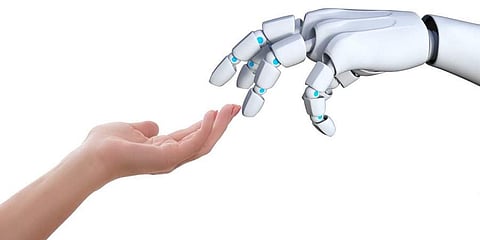

Scientists have designed a robotic gripper that uses sound waves to move small and fragile objects, without touching them.
The prototype robot developed by the researchers from ETH Zurich in Switzerland comprises of two semi-spheres and resembles a pair of headphones.
The spheres are connected to a circuit board carrying microchips. A small sphere hovers between the two semi-spheres, held up by ultrasound waves. "This phenomenon is known as acoustic levitation," said Marcel Schuck, a fellow at ETH Zurich.
He is developing a method that makes it possible to lift and manipulate small objects entirely without touching them.
This is particularly relevant in situations where damage to small components costs money, such as in the watchmaking or semiconductor industry, the researchers said.
Conventional robotic grippers are prone to damaging fragile objects. To counter this, soft, rubber-like grippers can be used, they said. Although these cause no damage, they are easily contaminated, like a well-used rubber eraser.
Additionally, these soft robotic grippers only offer limited positioning accuracy. The new technology is based on an effect that has been exploited for more than 80 years, and was first used in space exploration, the researchers noted.
Ultrasound waves generate a pressure field that humans cannot see or hear. Pressure points are created as the acoustic waves overlay each other, and small objects can be trapped within these points.
As a result, they seem to float freely in the air — in an acoustic trap, the researchers said.
Schuck has fitted numerous small loudspeakers into the two semi-spheres, created using a 3D printer.
The associated software allows the researchers to control the loudspeakers such that the pressure points can be moved around.
The goal is to change their position in real-time without the suspended object falling to the ground, Schuck said. Using the existing technology, scientists are able to move various small objects through space.
The software adjusts the gripper to the shape of the object to be lifted, and a robot arm then transports the object to the target destination, the researchers explained.
They said the principle of gripping without touching also has an economic benefit. When working with a conventional robot, a different gripper is required for almost every new shape, the researchers noted. The acoustic gripper eliminates the need for an extensive set of expensive high-precision grippers, they said.
